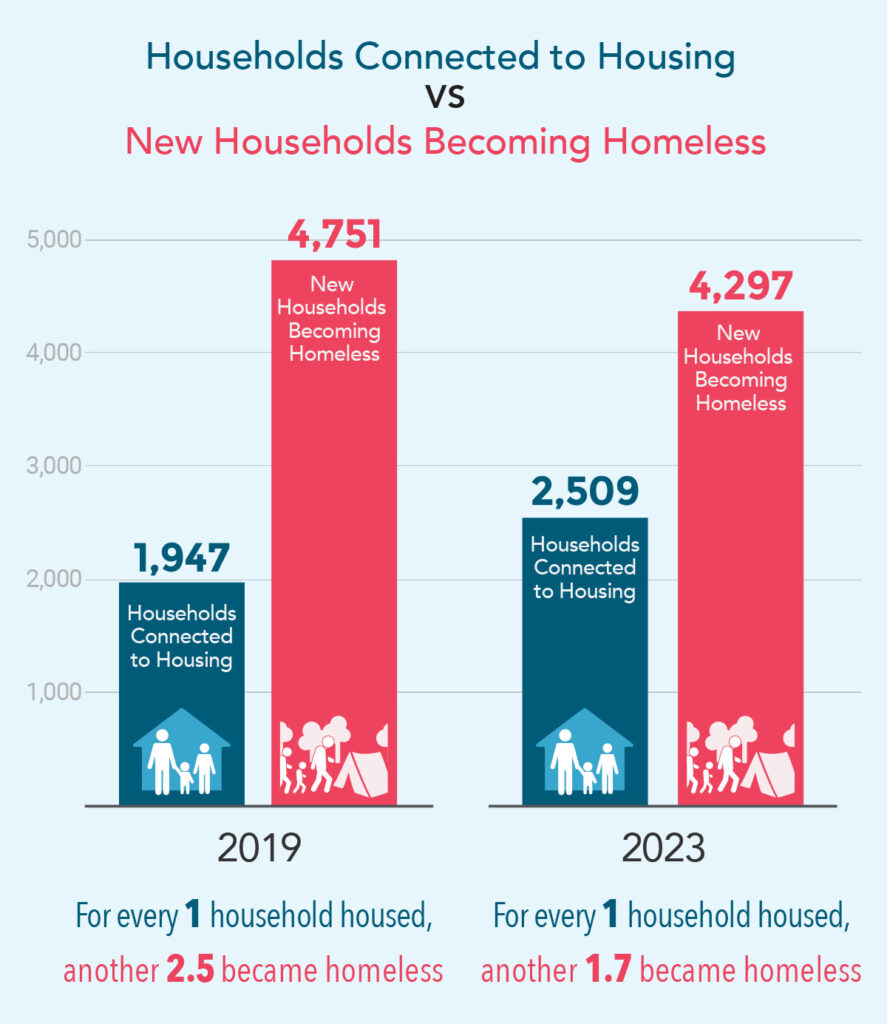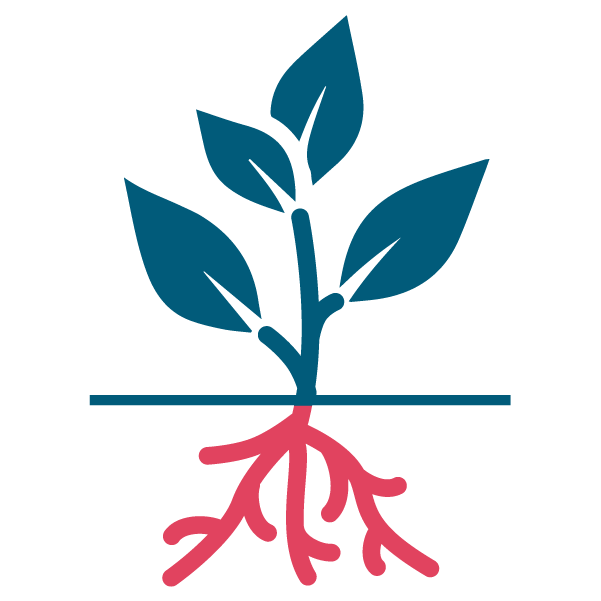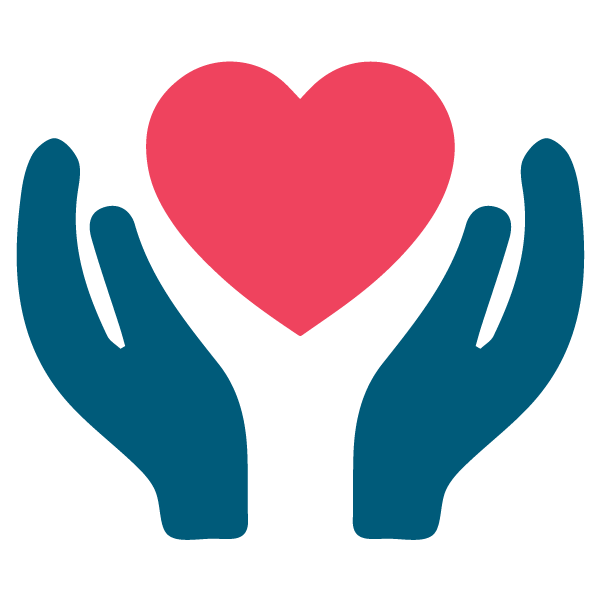(2020 – 2023)
Testing the Model
Despite the coalition’s key successes over the previous five years, out-of-control housing costs and other macroeconomic forces continued to fuel Santa Clara County’s homelessness crisis. The crisis was also becoming much more visible to residents throughout the county and the coalition was further put to the test by the emergence of the COVID-19 pandemic in early 2020. But thanks to the years it had spent building a true collective impactA concept first introduced in the Stanford Social Innovation Review in 2011, collective impact is a framework for deep and sustained collaboration between actors from different sectors to solve a specific social problem. Successful collective impact initiatives include a common agenda, shared measurement systems, mutually reinforcing activities, continuous communication, and backbone support organizations. model, the coalition was well prepared to step up and confront these new challenges.
An Evolving Crisis
Despite significant progress in housing people and getting more affordable units built, a census found 9,706 county residents were homeless on a given night in 2019—an increase from the ~7,000 seen at the beginning of this work in 2007. More than 80% of these individuals were unsheltered.
What explains this increase? First, housing costs remained out-of-reach for far too many local residents. An analysis by the National Low-Income Housing Coalition found that, in 2018, there were only 34 affordable units available for every 100 extremely low-income households in San Jose. In addition, income inequality was rising across the region. Between 2000 and 2015, workers in Santa Clara County with earnings in the 10th percentile saw their incomes decline by 12% while workers in the 90th percentile saw incomes rise by the same amount. This widening gap makes affordable housingSubsidized housing where rents are set at a below-market rate based on the tenant’s income. There are many different types of affordable housing — units are typically designated based on a tenant’s income level (i.e., low-income vs. extremely low-income) and certain types of affordable housing may also be reserved for a specific demographic (i.e., seniors or veterans). Deeply affordable housing refers to developments or units where rents are kept particularly low and are intended to serve the lowest-income residents in the community. even more out of reach for those living paycheck to paycheck.
This trend also made the region’s homelessness crisis much more visible to residents throughout the county. With the growing visibility of encampments, people living in vehicles, and unsheltered individuals struggling with substance abuse or mental health challenges, the crisis was becoming front-and-center in the public consciousness – creating both new challenges and opportunities for the coalition.
Responding to the COVID-19 Pandemic
A new challenge presented itself in early 2020, when COVID-19 started spreading throughout Santa Clara County. The pandemic placed individuals who were homeless or at risk of homelessness in an even more precarious situation. In addition to the public health concerns related to people living in crowded shelters or on the streets, the economic impacts of COVID-19 on those living paycheck to paycheck threatened to push even more people into homelessness.
However, the coalition was able to lean into the collective impact model it had built over the previous decade to quickly mobilize in response to this enormous threat. By working together over the next two years, the coalition helped shepherd a massive collective effort that successfully deployed nearly $85 million to 20,000 households at-risk of homelessness, temporarily sheltered 5,000 homeless individuals and piloted several new efforts that would become a key part of our overall homelessness response – during and beyond the pandemic.
Updating the Community Plan to End Homelessness
The COVID-19 pandemic underlined the need for bold action to address the root causes of homelessness and expand the system of care for people experiencing or at-risk of homelessness. Drawing on input from more than 8,000 community members—including people with lived experience—the coalition launched its 2020-2025 Community Plan to End Homelessness during the pandemic with a focus on three overarching strategies (each of which includes several different sub-strategies and tactics):
The 2020-2025 plan builds on successes and learnings from the previous five years, with a focus on growing and improving the collective impact model built over the previous years. The new plan also set aggressive targets designed to reverse the growth in homelessness seen in Santa Clara County since 2017. These include housing 20,000 people through the supportive housingA type of housing unit or program that combines affordable housing with support services (for example, mental health, employment, or peer support services) that has proven successful in helping homeless individuals become and stay housed. Supportive housing programs can come in many forms, including long-term programs (i.e., Permanent Supportive Housing) and shorter-term support (i.e., Rapid Rehousing). system, as well as reducing the annual inflow of people becoming homeless by 30%.
Integrating a Racial Equity Lens
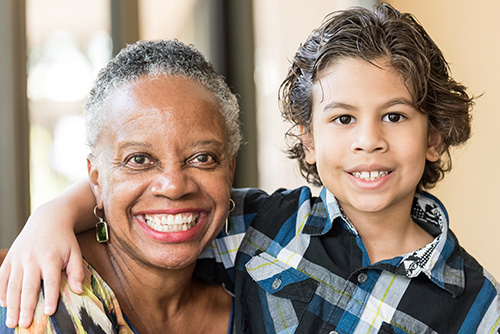
Early coalition efforts, unfortunately, did not include an explicit racial equity lens. But in 2020, Destination: Home partnered with SPARC (Supporting Partnerships for Anti-Racist Communities) to publish a report, Race & Homelessness in Santa Clara County, detailing the disproportionate impacts of homelessness among people of color, which found that they were dramatically more likely than their white counterparts to become homeless in the region, and that poverty alone could not explain this disparity.
This report helped catalyze growing efforts to better center racial equity in the coalition’s work and the 2020-2025 Community Plan to End Homelessness included both an explicit goal to reduce racial disparities among the homeless population and a number of intentional racial equity strategies, including:
Individual coalition members have also taken steps to further this work. For example, in 2022, Destination: Home launched the Andre Ellison Equity Fund was launched to support the outstanding work of organizations led by people with lived experience of homelessness and/or people of color. Thus far, the fund has granted a total of $3.95 million over a 3-year period to 11 organizations.
While there’s much more work ahead, coalition partners are committed to truly embedding a racial equity lens across the Continuum of Care.
Building New Interim Housing
& Shelter Models
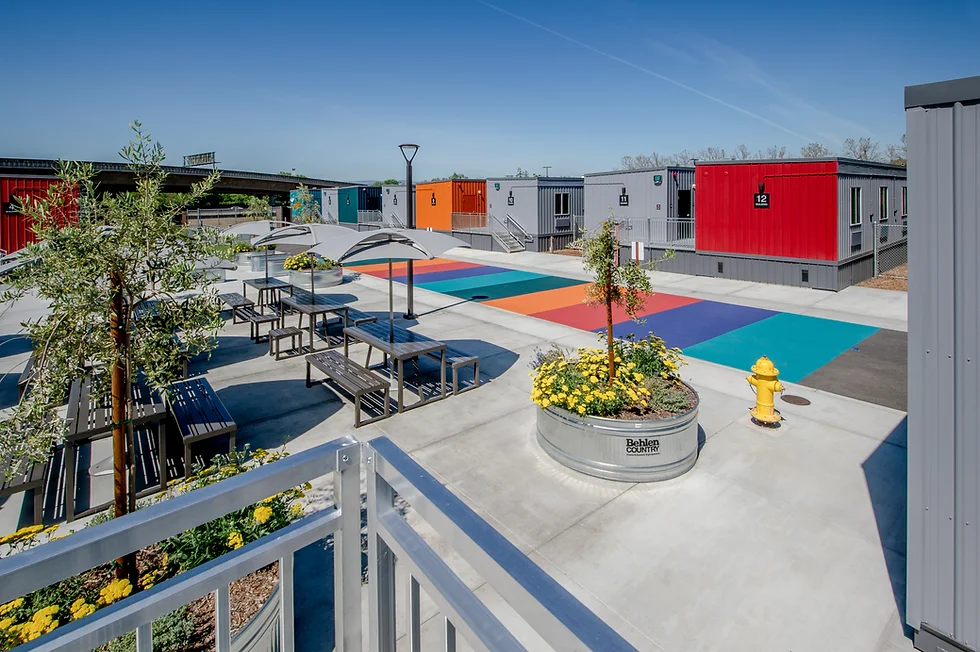
In addition to focusing on scaling the successful housing strategies that had been launched in the preceding decade, the new plan included a goal to double the community’s temporary housing and shelter capacity in order to help bring more people inside and serve as a path to accessing permanent housing.
As part of this effort, a number of coalition partners have explored new temporary housing and shelter models that can provide more private and dignified space than traditional congregate shelters: including efforts to use motels/hotels, tiny homes and modular units to provide temporary shelter for homeless individuals.
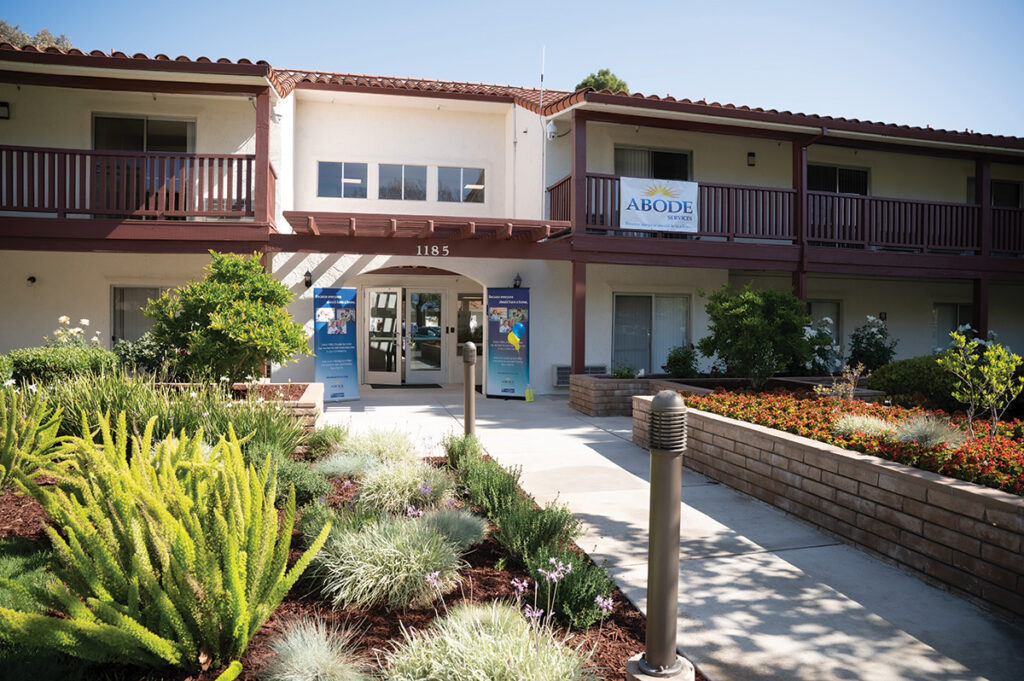
This has been a particular focus for the City of San Jose. Building on efforts made during the pandemic, the City has opened six interim housing sites (with a seventh under construction) that houses roughly 450 homeless individuals on any given night. The City has leveraged a wide variety of public and private sources to support this interim housing expansion, partnered with non-profit partners such as Abode, HomeFirst, LifeMoves and PATH to operate these sites and provide services, and solicited input from the Lived Experience Advisory Board on the design and operations into these sites.
Across the county, there are now more than 700 units of interim housing, which has contributed to a 50% overall increase in the community’s temporary housing and shelter capacity since 2020. And thanks to concurrent investments in permanent housing programs, and the coalition’s ongoing efforts to integrate these interim shelter sites into the broader supportive housing system, in 2023, roughly half of the people served by interim housing were able to find permanent housing.
Metrics from the 2020-2025 Community Plan
By the end of 2023, the coalition had made significant progress against their new community plan goals:
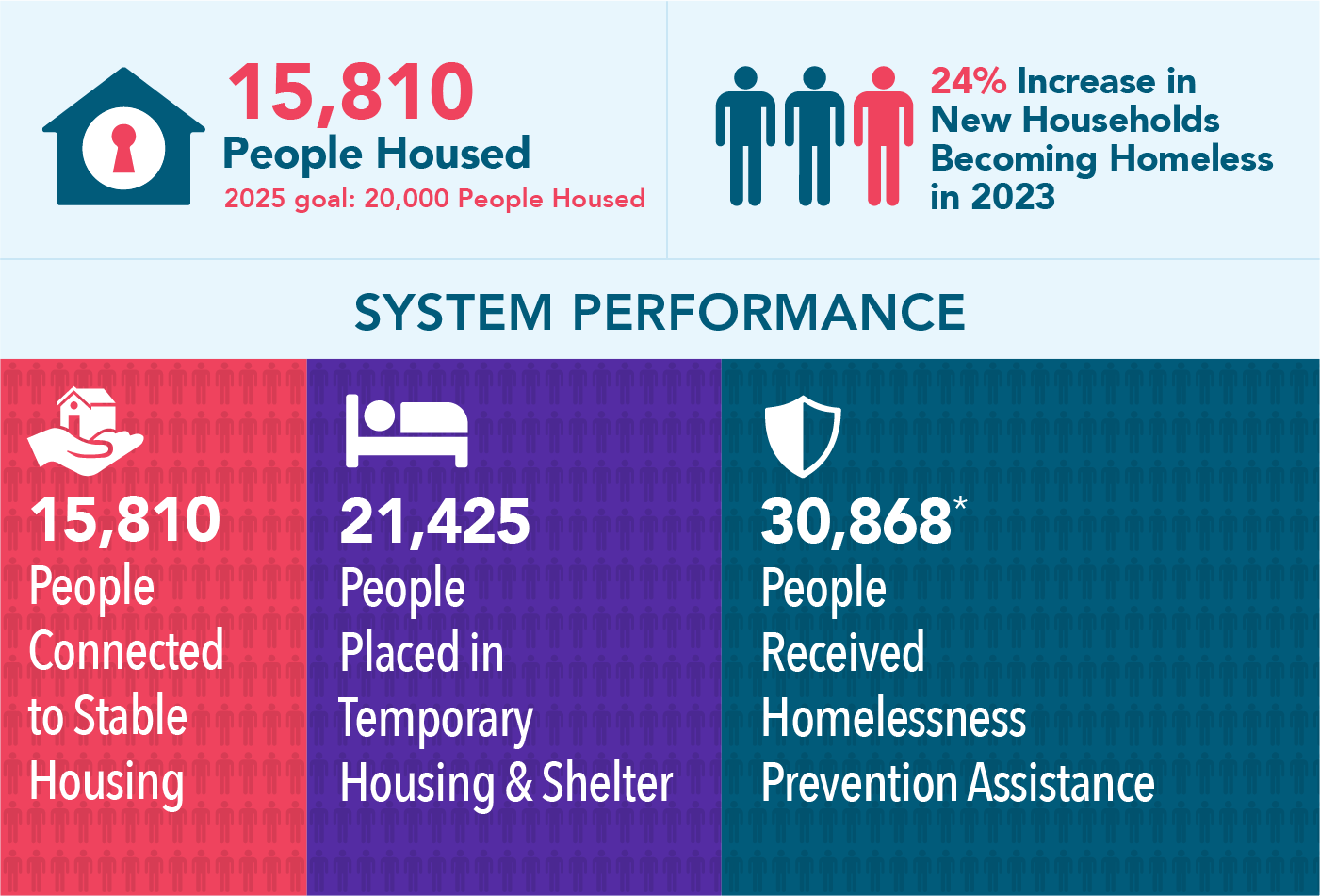
And thanks to this collective effort, the coalition was beginning to narrow the gap between “inflow” and “outflow” – important steps towards their collective goal of ending homelessness in Santa Clara County.
